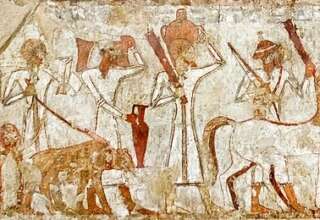
Kluckhohn & Strodtbeck’s classification
One of the earliest classifications of value orientations was developed in the fifties by the American anthropologist Florence Kluckhohn and the social psychologist Fred Strodtbeck (Samovar et al., 2009). They saw cultures as situated on five cultural dimensions. 1) Human nature was described as being evil, good and evil or bad. 2) The relationship between the person and nature was described as humans being subject to nature, in cooperation with nature or controlling nature. 3) Time orientation was described as toward the past, toward the present or toward the future. 4) Activity orientation was described as being, being-in-becoming, or doing. 5) Social relationships were described as authoritarian, group oriented, or individualistic. Later classifications incorporated parts of these dimensions.
We can find differences on all these dimensions between Bedouin, Dutch and Israeli cultures. Especially relevant for this study are the differences in social relationships, and orientation in time and activity. In line with the culture in which I was raised, my orientation is individualistic, and tends to the future and toward doing. As we will discuss later, my friend would emphasize collectivism, and be oriented toward being in the present.
Hall’s classification
The American anthropologist Edward Hall has proposed several cultural dimensions (Hall, 1970). Two of these dimensions are most relevant in the studied friendship. The first is the differentiation between high-context and low-context cultures. In low-context cultures the meaning of provided information is in the information itself. In high-context cultures the meaning of the information is dependent on the context. The second differentiation concerns monochronic (M) time and polychronic (P) time. Hall (1970) writes:
M-time emphasizes schedules, segmentation, and promptness. P-time systems are characterized by several things happening at once. Emphasis is on involvement of people and completion of transactions rather than adhering to preset schedules. P-time is treated as much less tangible than M-time (p. 222).







